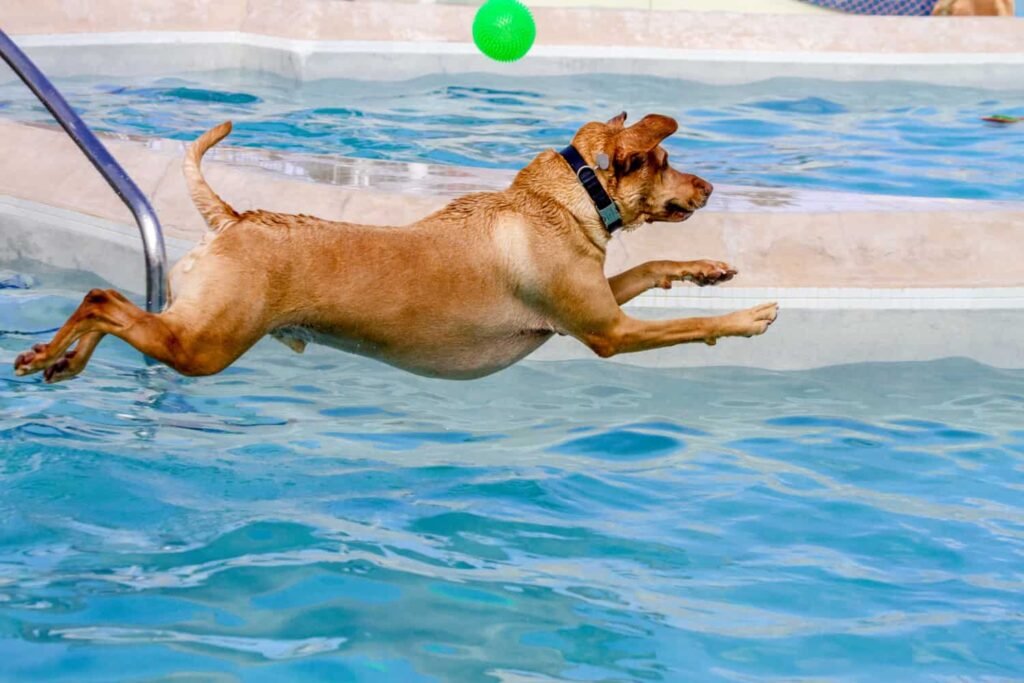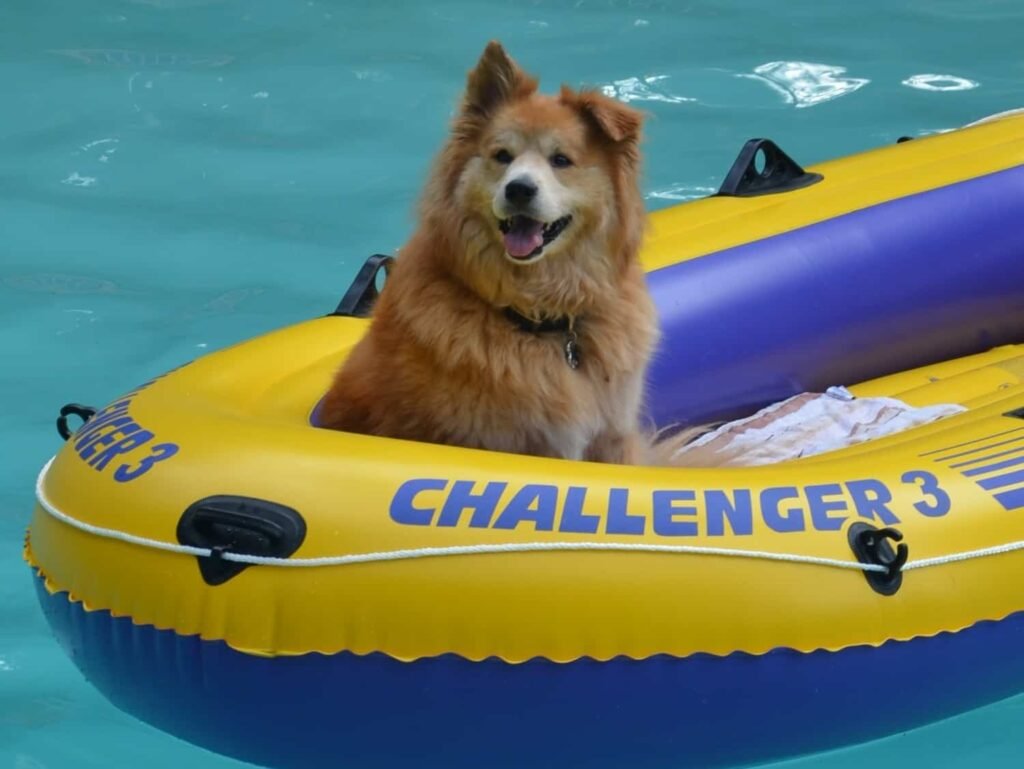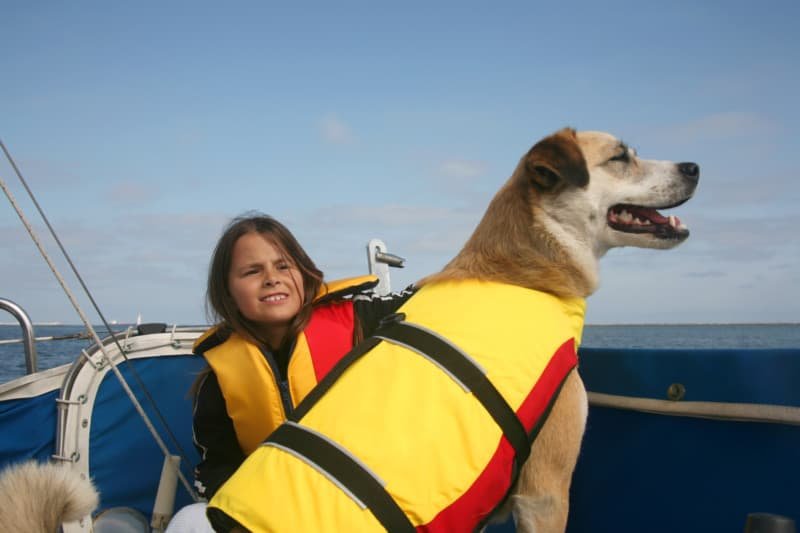Not all dogs instinctively know how to swim. While some breeds, like retrievers or spaniels, may have a natural affinity for the water, others—especially those with a short neck or a heavy build—might need a little help getting comfortable. Whether your dog is hesitant about water or ready to dive in, teaching them how to swim is an invaluable skill that will not only improve their safety but also offer years of fun-filled activities together.
Why Teaching Your Dog to Swim Matters
Every year, thousands of dogs in the U.S. tragically drown in pools or other bodies of water. In many cases, the dog becomes exhausted after swimming and can’t find their way out. Just like humans, dogs can quickly tire out in water, and without proper training, they may struggle to get to safety. For this reason, teaching your dog to swim is one of the most important steps you can take for their well-being.

Besides enhancing safety, swimming offers numerous benefits for dogs. It’s a fantastic low-impact exercise for dogs with arthritis or joint issues, as the buoyancy of the water helps reduce stress on their body while providing a solid aerobic workout. It’s also an excellent way to burn off excess energy, making it a favorite activity for high-energy breeds or dogs with behavioral issues.
If your dog enjoys water, swimming can become a fun and enriching exercise. For performance dogs—whether they’re agility champions or frisbee enthusiasts—swimming is an effective way to keep them in top physical condition, helping to build endurance and stamina.
Does Your Dog Enjoy Water?
The first step in teaching your dog to swim is assessing whether they even enjoy being around water. Some dogs love the splash and play, while others are far more cautious, if not outright scared. You may find that even breeds known for their water-loving tendencies, like retrievers, need a little encouragement.
For example, short-necked breeds like Bulldogs or Pugs may find it harder to keep their head above water. Similarly, even some water-loving retrievers and spaniels need time and practice to perfect their swimming technique.

Consider your dog’s reaction the first time they encounter water. If they hesitate, splash around in circles, or try to avoid getting wet, it’s likely they’ll need some time to build confidence. On the other hand, if they eagerly jump in or start paddling with all four legs, you’ve got yourself a natural-born swimmer!
Start Slow: Introducing Your Dog to the Water
When teaching your dog to swim, the key is to start slow and keep the experience positive. Never push your dog into the water or force them to swim before they’re ready. Instead, gently introduce them to shallow water, using a favorite toy or treat as a lure to encourage them to step in.

Here are a few tips for getting started:
- Choose a calm, shallow area: Avoid fast-moving water or areas with a lot of boat traffic. Shallow lakes, pools, or quiet beaches are perfect places to start. Let your dog wade in and get comfortable feeling the water around their paws before progressing.
- Take it slow: Start with short sessions. Keep the lessons no longer than 10 minutes to prevent exhaustion and allow your dog to rest. Gradually increase the duration as your dog gets more comfortable in the water.
- Use a leash: Keep a leash or long line on your dog while they’re learning to swim. This will give you control and ensure that they don’t wander off or panic.
- Avoid cold water: Cold water can be a shock to your dog’s system and make the experience less enjoyable. Ensure that the water temperature is comfortable for both of you before starting.
Safety Comes First: Precautions for a Safe Swim
While teaching your dog to swim can be a fun and rewarding experience, safety should always be your top priority. Here are some important precautions to take:
- Never leave your dog unsupervised around water: Even if your dog is a confident swimmer, accidents can happen. Always keep a close eye on them, especially near pools, lakes, or other bodies of water. If you have a pool, install a fence and ensure that your dog knows where the exit steps are.
- Use a life vest: Life vests aren’t just for boating. If you’re training a dog to swim or if they’re not a strong swimmer, a life vest can help keep them afloat and boost their confidence. Get your dog accustomed to wearing the vest before taking them into the water.
- Teach your dog to find the steps or ramp: If you’re swimming in a pool, it’s important that your dog knows where the exit is. Gradually guide them to the steps or ramp, reinforcing the behavior by saying “steps” every time they approach the exit.
- Know the risks of waterborne illnesses: If you’re swimming in natural bodies of water, such as lakes or rivers, consider vaccinating your dog against diseases like Giardia, which can cause gastrointestinal problems.
- Avoid swimming after meals: To prevent bloat, a potentially life-threatening condition, avoid swimming right after your dog has eaten. Wait at least 1 to 2 hours after a meal before entering the water.

Progressing in the Water: Building Confidence
As your dog becomes more comfortable in the water, you can begin to help them develop their swimming technique. For many dogs, the instinct to paddle with their front legs comes naturally. However, using just the front legs might leave them struggling to stay afloat. To help, gently support their hind end and encourage them to use their back legs to kick.
If your dog is already starting to kick with their front and back legs in a coordinated motion, they’re on their way to becoming a proficient swimmer! With time and practice, they’ll gain more confidence and skill.
Keep It Fun and Rewarding
The most important thing when teaching your dog to swim is to make the experience enjoyable. Don’t pressure them into swimming if they’re not ready, and always stop when they start to show signs of fatigue. If your dog loves the water, you’ll soon be able to take part in fun activities like paddleboarding, boating, or even dock diving.
If your dog isn’t a natural swimmer, that’s okay too. Some dogs prefer to stay on dry land, and there’s no need to force them into the water. It’s all about finding activities that both of you can enjoy together.
Whether it’s wading in a kiddie pool or splashing around at the beach, swimming is a wonderful way to bond with your dog while helping them stay active and healthy. With patience, positive reinforcement, and plenty of breaks, you and your dog can enjoy a lifetime of fun in the water.


